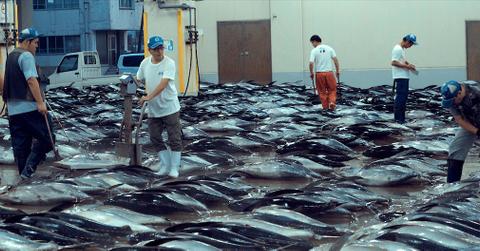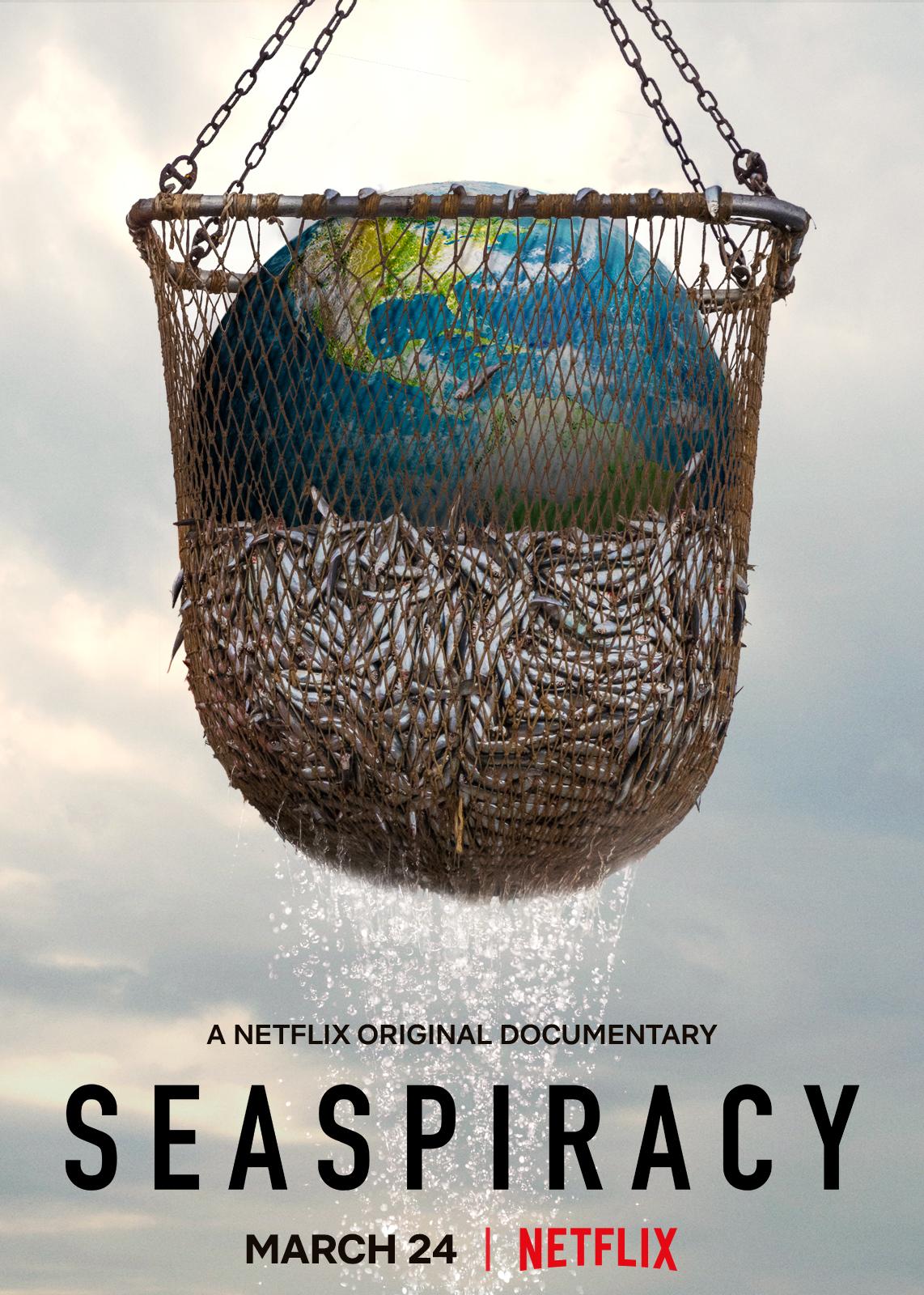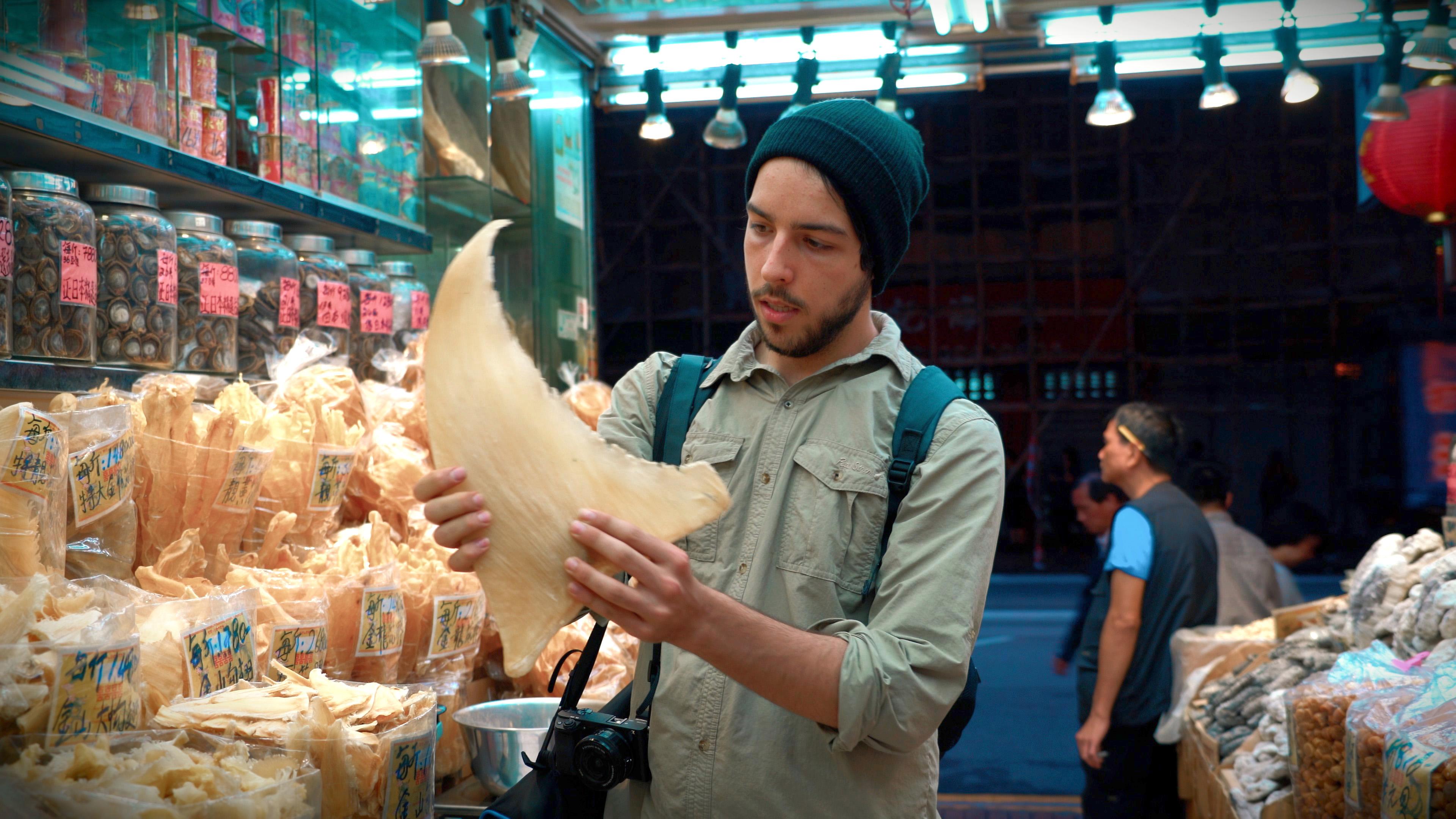‘Seaspiracy’: 8 Major Takeaways About the Fishing Industry From the Netflix Doc
Updated March 29 2021, 4:58 p.m. ET

The new environmental documentary Seaspiracy just hit Netflix on March 24, 2021, and it's already made the streaming platform’s Top Ten lists in dozens of countries. The film exposes various environmental and human rights injustices in the fishing industry, including shocking and devastating accounts of animal abuse, environmental destruction, slave labor, and even murder.
Worldwide, Seaspiracy is waking viewers up to the fishing industry, and sending a shocking message: sustainable seafood is a scam, we are destroying our oceans, and we need to do something about it.
There’s so much to learn from the bone-chilling, must-watch documentary — and it’s such an important watch for anyone who cares about marine life, the ocean, or human rights. Here are eight of the biggest facts to take away from Netflix’s Seaspiracy.

Bycatch is responsible for killing numerous whales, dolphins, and other sea animals.
Bycatch is defined as non-target marine catch who are left dead or dying as a result of the fishing industry. According to Seaspiracy, more than 300,000 whales and dolphins are killed each year as bycatch; 30,000 sharks are killed every hour; and 250,000 sea turtles are injured or killed (in the U.S. alone). Not to mention, there are many other animals killed as bycatch, including non-target fish that are too small, sea birds, and other animals.
Basically, when consumers eat one fish, they are not just responsible for the life of that one fish, but also the life of many other marine animals.
The Dolphin Safe label doesn’t mean anything.

Tuna caught in a net.
Many consumers look for the Dolphin Safe label when shopping for tuna — but according to the documentary, the label isn’t much more than a marketing strategy. A former Dolphin Safe employee interviewed in the film said that he left his well-paying position there because he discovered the scheme to be a “fraud.”
Even Mark J. Palmer, who currently works for Earth Island Institute and its Dolphin Safe tuna label, was unable to guarantee that Dolphin Safe tuna is truly dolphin-safe. “Once you’re out there in the ocean, how do you know what they’re doing?” he said in Seaspiracy, acknowledging that the observers on fishing boats are rarely present, and that when they are, they can be bribed.
And one representative for Sea Shepherd, an organization that holds direct action campaigns to protect marine wildlife, recalled catching one fishing vessel that was working for Dolphin Safe canned tuna, that killed 45 dolphins to catch just eight tuna fish.
Fishing gear makes up most of plastic pollution.
As explained in the film, most of the conversation around ocean plastic tends to surround items like straws, plastic bags, and cotton buds — but in reality, about 46 percent of plastic in the Great Pacific Garbage Patch is discarded fishing nets, and most of the remainder is other fishing gear.
Additionally, every single day, the fishing industry uses enough fishing line to wrap around the Earth 500 times. And fishing nets and lines are “far more dangerous to marine life than our plastic straws. Because, of course, they’re designed to kill,” author and journalist George Monbiot said in Seaspiracy.
We are destroying our oceans.

Not only is fishing gear contributing to plastic pollution and the death of marine life, but fishing is also hurting ocean ecosystems. For example, bottom trawling (dragging nets — nets that are big enough to envelop 13 jumbo jet planes — along the ocean floor to catch fish) deforests about 3.9 billion acres of seafloor annually. That’s the equivalent of deforesting 4,316 soccer fields every minute.
“By continued extraction of fish out of our oceans, you’re essentially deforesting our oceans,” author Richard Oppenlander said in the doc, adding that these “methods of removal are devastating to habitat, to ecosystems.”
93 percent of the world’s CO2 is stored in the ocean, according to the documentary, so protecting the ocean is in everyone’s best interest.
Major environmental organizations are in business with the fishing industry.
Ali Tabrizi investigated the websites of many major environmental organizations who were opposed to plastic pollution — and he noticed that discourse around plastic straws and other single-use plastic dominated the conversation.
For Seaspiracy, Tabrizi interviewed several figureheads from these organizations, asking them why there are no recommendations to say no to eating fish on their websites. For example, he spoke with Dianna Cohen, CEO of the Plastic Pollution Coalition, but she declined to comment on why her organization does not address fishing net plastic.
Upon further investigation, Tabrizi discovered that the Plastic Pollution Coalition is a project of Earth Island Institute, which is the group behind the Dolphin Safe tuna label. Basically, certain environmental nonprofits have deep ties to the fishing industry, so they are not allowed to tell their audiences to reduce their intake of fish, as it would put off profits.
Fishing boats often use slave labor.
According to the documentary, there have been reports of slave labor in the seafood industry in 47 countries. Seaspiracy features compelling interviews with two men who were formerly held as slaves on fishing ships in Thailand, one for 10 years, the other for six years. The men, whose faces were obscured for the documentary, shared stories of the abuse they witnessed on fishing boats.
One of the men recalled witnessing sea captains murder forced laborers, whose bodies were later tossed overboard. “When the ships are in the middle of the ocean, where problems occur, they can throw you overboard into the sea,” he said. “They can just say to the authorities that you were sick and fell into the sea.”
Sustainable seafood doesn't really exist.
In the film, Tabrizi noted that many organizations recommend eating “sustainable seafood” rather than reduce or eliminate seafood from diets. In the film, he spoke with María José Cornax of Oceana, who was unable to define sustainable fishing, nor explain why Oceana does not recommend consumers reduce seafood consumption.
He also sat down with Commissioner Karmenu Vella of Fisheries and Environment, who believes it is too extreme to tell consumers to stop eating fish. Rather than apply the same rigor applied to banning single-use straws to the fishing industry, he said it is better to encourage more “sustainable fishing” — even though there is clearly nothing sustainable about the fishing industry, as fishing is clearly depleting our oceans.
The No. 1 thing we can do to help is eliminate or reduce fish consumption.
The Seaspiracy team has three pieces of advice for those who want to help save the ocean. Their No. 1 tip — which is something many of us can easily do — is to stop eating fish, and shift to a plant-based diet. We have a few recommendations of brands making delicious vegan seafood products that are better for the environment, the ocean, the animals, and even your health.
Second, they encourage viewers to enforce no-catch marine reserves protecting 30 percent of our oceans by 2030; and finally, they encourage governments to end fishing subsidies, which currently stand at about $35 billion each year.
There is so much more to learn from Seaspiracy that we did not include here — give the 89-minute documentary a watch on Netflix sometime this week, and let’s get to work protecting our oceans.